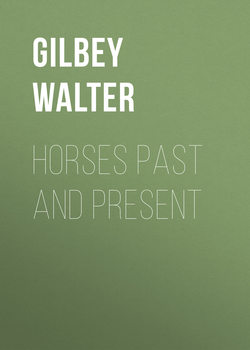Horses Past and Present

Реклама. ООО «ЛитРес», ИНН: 7719571260.
Оглавление
Gilbey Walter. Horses Past and Present
HORSES PAST AND PRESENT
BEFORE THE CONQUEST
WILLIAM THE CONQUEROR (1066-1087)
WILLIAM RUFUS (1087-1100)
HENRY I. (1100-1135)
HENRY II. (1154-1189)
RICHARD I. (1189-1199)
JOHN (1199-1216)
EDWARD II. (1307-1327)
EDWARD III. (1327-1377)
RICHARD II. (1377-1399)
HENRY VII. (1485-1509)
HENRY VIII. (1509-1547)
EDWARD VI. (1547-1553) AND QUEEN MARY (1553-1558)
ELIZABETH (1558-1603)
JAMES I. (1603-1625)
CHARLES I. (1625, Behd. 1649)
THE COMMONWEALTH (1649-1659)
CHARLES II. (1660-1685)
WILLIAM III. (1689-1702)
QUEEN ANNE (1702-1714)
GEORGE I. (1714-1727)
GEORGE II. (1727-1760)
GEORGE III. (1760-1820.)
GEORGE IV. (1820-1830)
WILLIAM IV. (1830-1837)
HER MAJESTY QUEEN VICTORIA. Acc. June 20, 1837
LIGHT HORSES
HEAVY HORSES
Отрывок из книги
First among animals which man has domesticated, or brought under control to do him service, stands the horse. The beauty of his form, his strength, speed and retentive memory, alike commend him to admiration; the place he holds, whether in relation to our military strength, our commercial and agricultural pursuits, or our pleasures, is unique. Whether as servant or companion of man the horse stands alone among animals.
There can be no doubt but that the horse was broken to man’s service at an early period of the world’s history. The art of taming him was first practised by the peoples of Asia and Africa, who earliest attained to a degree of civilisation; but whether he was first ridden or driven is a question which has often been debated with no definite result. The earliest references to the use of horses occur in the Old Testament, where numerous passages make mention of chariots and horsemen in connection with all warlike operations.
.....
Saxons and Danes brought horses of various breeds into England, primarily to carry on their warfare against the British; the most useful of these were horses of Eastern blood, which doubtless performed valuable service in improving the English breeds. The Saxon and Danish kings of necessity maintained large studs of horses for military purposes, but whether they took measures to improve them by systematic breeding history does not record.
King Alfred (871 to 899) had a Master of the Horse, named Ecquef, and the existence of such an office indicates that the Royal stables were ordered on a scale of considerable magnitude.
.....